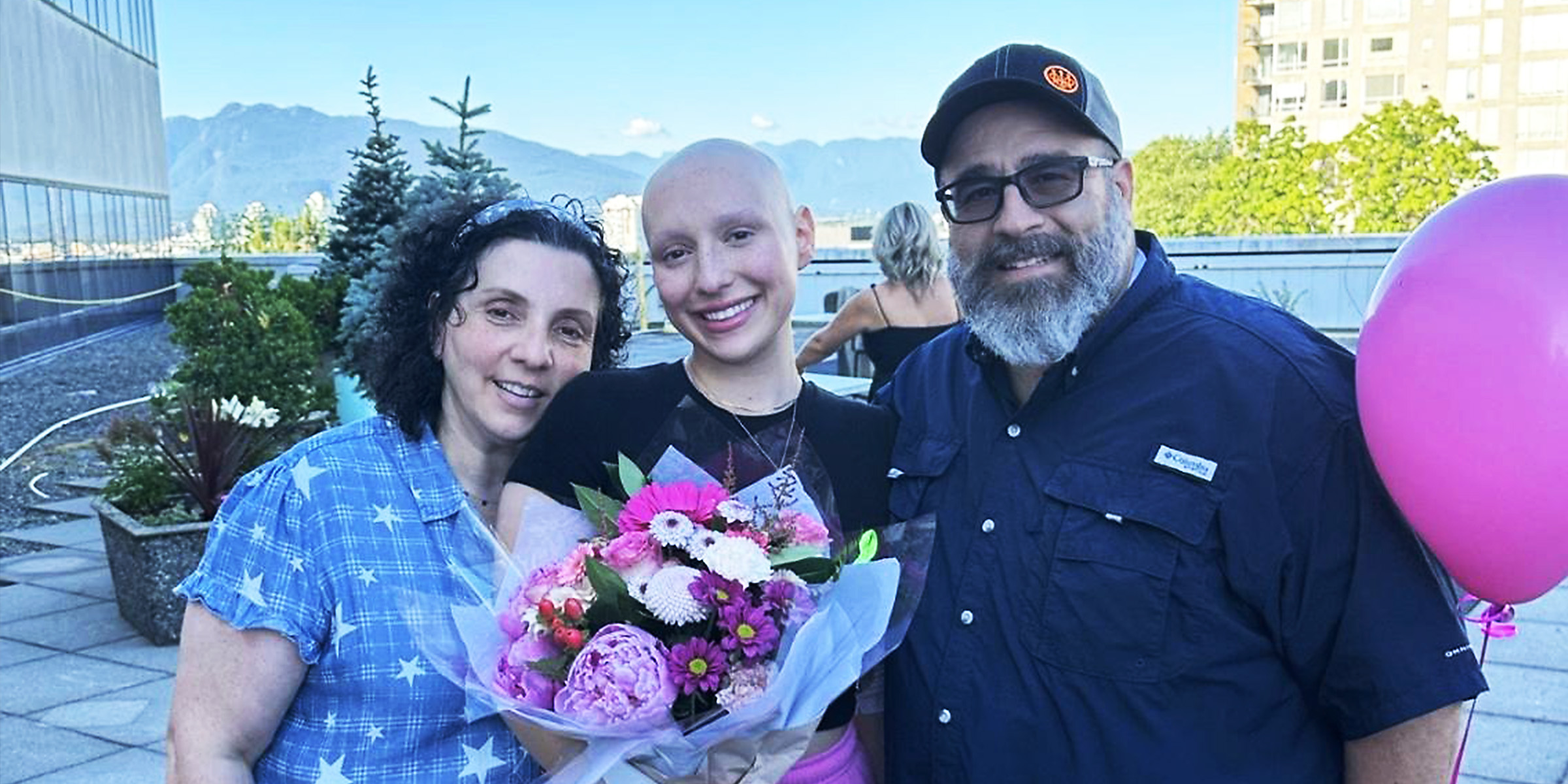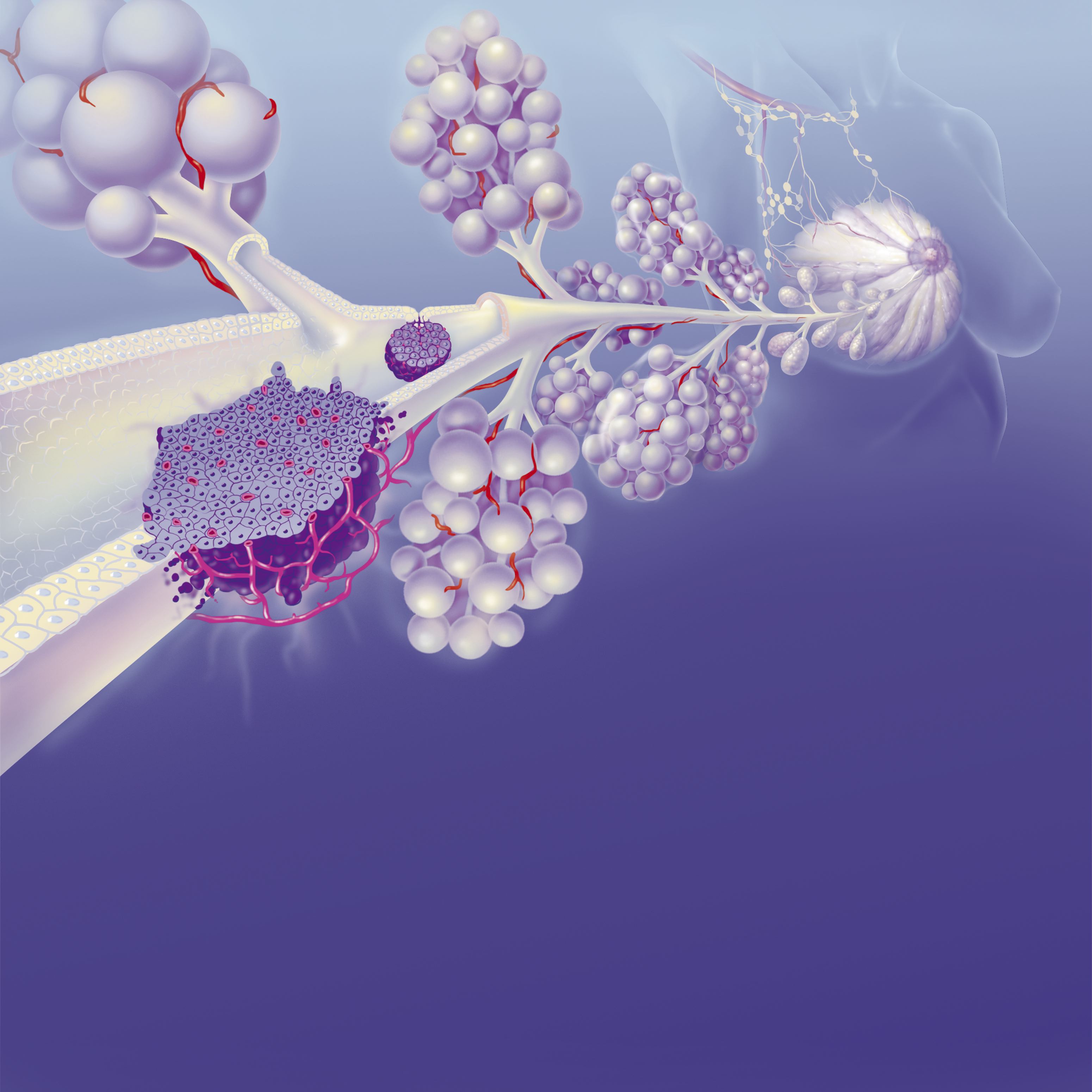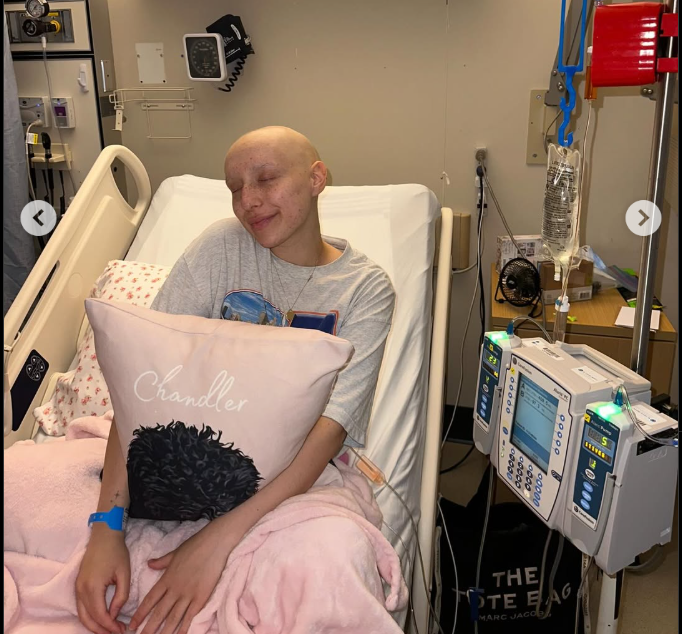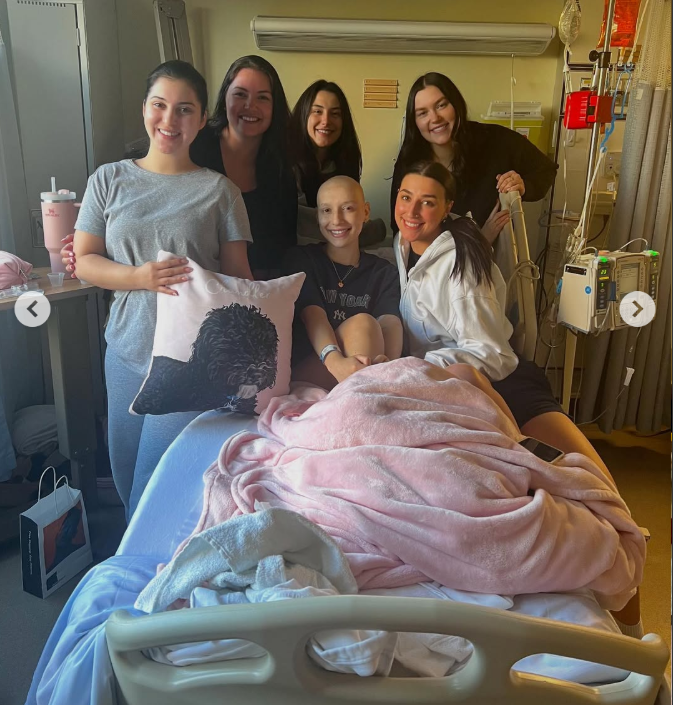
Her Mom Survived a Deadly Illness, Then the Daughter Got the Same Diagnosis and Hid It – What Happened Next?
A family had just begun to reclaim a sense of normalcy after its matriarch started recovering from a life‑threatening illness. Months after her final treatment, her daughter, in her early 20s, was diagnosed with a different form of the same disease. Their struggles reshaped their outlook on life and drew them closer than ever.
They were inseparable, mother and daughter, known for spontaneous shopping trips and late-night chats. Life had always felt light and ordinary until the day one of them received a shocking diagnosis. The family rallied, holding on to hope that the worst was behind them.
Then came the second blow. The daughter got her own diagnosis but stayed silent, terrified of adding to her mother's burden. For weeks, she carried the secret alone, fearing how the truth might shake the fragile sense of hope her family was clinging to.
A Mother's Fight Begins
In June 2021, Marilena Di Giovanni learned she had breast cancer. The diagnosis launched her into months of chemotherapy, scans, and follow-up appointments, a routine that would reshape daily life for her and her family.
Breast cancer is one of the most common cancers in women. It occurs when cells in the breast become abnormal and start multiplying uncontrollably, forming tumors. About 80 percent of cases are invasive, which means the tumors can spread beyond the breast to other areas of the body.

Breast cancer illustration showing a tumor on the milk duct and blood vessels around cancer cells. | Source: Getty Images
Although the disease mainly affects women over 50, it can appear at younger ages, and men can develop it as well. Doctors do not know exactly what triggers breast cells to become cancerous, but several factors can raise the risk. These include factors such as being 55 or older, being female, and having a close family history of the disease.

Illustration of breast cancer, with a view of the mammary gland and nearby axillary lymph nodes. | Source: Getty Images
Up to 15 percent of breast cancer cases are linked to inherited mutations in the BRCA1 or BRCA2 genes. Lifestyle and medical history can also play a role. Smoking, drinking alcohol, obesity, prior radiation therapy to the chest, and hormone replacement therapy all increase the risk of developing the disease.
Through months of chemotherapy, Marilena relied on her family's support. Her daughter, Danica Di Giovanni, often sat beside her during infusions, watching her mother endure fatigue and other side effects.
By October 2021, Marilena had completed chemotherapy, and the family felt a careful sense of relief. Still, she faced follow-up surgeries and ongoing monitoring, knowing that the experience was far from over.
A Daughter's Mysterious Symptoms
By the fall of 2022, the Di Giovanni family hoped life was finally settling back into a rhythm. However, in October, Danica, then 21, began experiencing sharp pain in her back and an exhaustion that no amount of rest could fix. At first, she blamed it on the 13-hour shifts she worked as a nail technician.
Within weeks, new symptoms appeared. She developed a persistent cough and began waking up drenched in sweat at night. These episodes left her uneasy, but when she mentioned them to doctors, they dismissed her concerns as stress or anxiety, noting that she was young and otherwise healthy.
By December, the back pain had become so severe that Danica could no longer work. Simple movements were difficult, and her exhaustion deepened. She knew something was wrong, but without answers, she tried to push through, keeping most of her fears to herself.
The Emergency Room Discovery
On January 13, 2023, Danica went to the emergency room after the pain became unbearable. That morning, she had lost feeling in her left arm, and the fear she had been trying to ignore could no longer be pushed aside.
At first, her concerns met the same skepticism she had heard for months. Doctors suggested it was nothing urgent, but she refused to leave without answers. Danica insisted on getting an X-ray of her chest and back, explaining that something was deeply wrong.
After hours of waiting, a doctor finally agreed to the scan. When the results came back, he called Danica, alone, into his office. The X-ray showed an alarming mass in her chest. She remembers him saying, "It really looks like cancer."
Over the following days, Danica underwent a biopsy and a CT scan. Tests revealed a 12-centimeter mass pressing against her chest. Two weeks later, the diagnosis was confirmed: she had a rare form of non-Hodgkin lymphoma.
Non-Hodgkin lymphoma (NHL) is a group of blood cancers that originate in the lymphatic system, which plays a key role in helping the body fight infections. These cancers are classified into two main types: B-cell lymphomas and T-cell lymphomas. Tumors typically begin in the lymph nodes but can spread to other parts of the lymphatic system and throughout the body.
Some forms are curable, while others require ongoing management. The most common symptom of NHL is painless swelling in the lymph nodes, often in the neck, armpits, or groin. Other symptoms depend on where the lymphoma forms and can include:
- Persistent fatigue
- Chest pain or a lingering cough
- Trouble breathing (dyspnea)
- Abdominal pain or swelling
- Feeling full quickly, even after small meals
- Unexplained fever (especially fevers above 103°F or 39.5°C that last more than two days or persist despite home care)
- Drenching night sweats that soak bedding
- Unexplained weight loss of about 10 percent of body weight over six months
Because these symptoms can mimic those of other conditions, they are often overlooked at first. However, persistent or worsening symptoms — like the ones Danica experienced — should prompt medical attention. The prognosis for non-Hodgkin lymphoma varies depending on the type and stage of the disease.
Aggressive B-cell lymphomas can often be cured if treated promptly. When relapse occurs, it is most likely within the first two years after treatment; if the disease does not return in that period, recurrence is less common. Regular follow-ups are essential to monitor for any signs of relapse.
The Secret and the Reveal
For Danica, receiving the diagnosis was overwhelming, but sharing it felt even harder. She couldn't bring herself to tell her mother, knowing she had only recently faced a battle of her own. She could still picture sitting beside Marilena during her final chemotherapy session in late 2021.
Instead of sharing the news immediately, Danica turned to her father first. "I was like, 'This is what happened, and the doctors told me that this possibly is cancer, and I don't know how to tell mom,'" she recalled.
When her father finally told Marilena, the reaction was instant. She began to cry, sensing what Danica was going through even before the diagnosis was official. "It was just kind of a shock for my family," Danica said. "But she said, 'Whatever happens, we're going to pray that God is going to help us through this.' And that's exactly what happened."
As they waited for the treatment plan, the disease progressed quickly. By March 2023, the mass in Danica's chest had grown to 15 centimeters. The pain was so severe that her father had to help her out of bed, and even speaking became difficult.
The next stage of the story would test their family bond even further, as mother and daughter began navigating treatment together, one with experience, and one just beginning.

Danica Di Giovanni celebrates with her mother, dated June 30, 2025 | Source: Instagram/@danicadigio
Two Battles, One Bond
When chemotherapy began in March 2023, Danica entered a world her mother knew well. Her treatment plan involved six rounds of intensive inpatient chemotherapy, each lasting days at a time, and required multiple blood transfusions and repeat emergency visits. The physical toll was immediate. She endured over 720 hours of chemotherapy, severe pain, and long hospital stays.
Marilena became her daughter's guide through the process. She passed along small but meaningful lessons she had learned during her own fight, like using a pillow under the knees to ease discomfort and eating ice cream to soothe the mouth sores caused by treatment. "She told me ice cream helped her the most," she shared.

Danica Di Giovanni pictured in her hospital bed, dated June 30, 2025 | Source: Instagram/@danicadigio
Their connection deepened in quiet moments at the hospital. Marilena would sit with Danica during infusions, holding her hand and rubbing her legs as the drugs dripped in. When she left for the night, they stayed connected on FaceTime until Danica fell asleep, her mother's Tiffany heart pendant tucked close as a reminder she wasn't alone.
Even with their closeness, the treatments were grueling. Danica recalled thinking about the months ahead and wondering, "Am I going to be like my mom? Am I going to be in the hospital every single day fighting for my life, in pain?" Her fears were real, but so was the comfort of having someone by her side who had survived the same path.

Danica Di Giovanni, dated June 30, 2025 | Source: Instagram/@danicadigio
Triumphs and Turning Points
By July 2023, after months of hospital stays and grueling treatments, Danica reached the milestone she had been fighting toward — her final chemotherapy session. She rang the bell at the hospital, marking the end of the hardest chapter of her life.
Two months later, in September 2023, Danica learned she was officially cancer‑free. She delivered the news in a hospital room to her mother, who had just undergone another breast surgery. The moment was bittersweet. Marilena couldn't hug her daughter as she was still in recovery, but relief and gratitude filled the space.

Danica Di Giovanni celebrates being cancer‑free with her mother, from a post dated June 30, 2025 | Source: Instagram/@danicadigio
Marilena later described it as "the most indescribable feeling," knowing that her daughter's fight was finally over. In June 2025, Danica celebrated two years cancer‑free. She marked the milestone with a simple message online. "2 years cancer free," she wrote. Her mother, Marilena, remained in recovery as well, with doctors finding no signs that her breast cancer had spread.
For both illnesses, ongoing vigilance remains a constant part of life. Breast cancer can return even years after treatment, which is why patients continue with regular screenings and follow‑up care. Non‑Hodgkin lymphoma requires similar monitoring.
Their experience left a lasting impact on how the two women approach life. Danica has spoken about how the ordeal reshaped her priorities, sharing that the smallest things — family dinners and a phone call from her mom — carry more weight than they ever did before. Marilena shared that the experience, though painful, left both of them with a renewed perspective on life.
For another family, the disease struck even deeper, stretching across generations and resurfacing more than a decade after a mother's death. Read about the Harding sisters, who faced rare, back‑to‑back diagnoses.
The information in this article is not intended or implied to be a substitute for professional medical advice, diagnosis or treatment. All content, including text, and images contained on news.AmoMama.com, or available through news.AmoMama.com is for general information purposes only. news.AmoMama.com does not take responsibility for any action taken as a result of reading this article. Before undertaking any course of treatment please consult with your healthcare provider.
